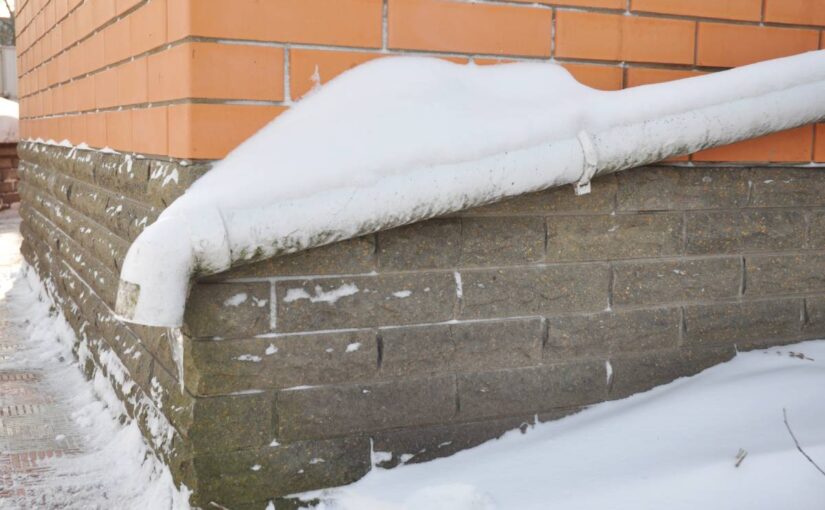Humidity in basements is a common yet frequently overlooked issue that can have profound implications on both the health of inhabitants and the structural integrity of the home. Maintaining an optimal humidity level is not only essential for comfortable living, but it’s also a crucial part of home maintenance.
Category: Mold
Common Crawl Space Waterproofing Problems & Solutions
By: | Published June 29, 2023Basements have a lot of nooks and crannies, but the biggest space to watch out for is your crawl space. This large, open area is a magnet for moisture and pests due to its size and how infrequently it’s accessed. Many homeowners run into crawl space waterproofing issues because their home wasn’t properly waterproofed in the past.
If you’re tired of mold growth or other moisture-related problems, read on to learn about the most common issues with crawl space waterproofing and how to keep moisture out once and for all.
Controlling Basement Humidity for Whole Home Health
By: | Published September 6, 2022If walking in your basement is best done with an umbrella, you have a problem! Water condensation drops on your basement ceiling is a sure sign you are in need of help in controlling basement humidity. Not all basement humidity issues are as obvious as “rain” in your basement, but controlling basement humidity is important for your home’s foundational health as well as the health of you and your family.
What Is the Ideal Basement Humidity in Winter Weather?
By: | Published February 26, 2021Winter here in the Midwest means cold weather, ice, and snow. While this can be great for winter sports like skiing, ice fishing, and snowmobiling, those dropping temperatures outside generally create dropping humidity levels inside.
Dispelling Common Mold Myths in Your Home
By: | Published August 28, 2019Mold has become a “four-letter word” when it comes to homes in the last several years. Although the trend is toward “going green” and mold is natural and sometimes greenish, it is not a part of nature you want in your home no matter what color it is!
Moisture Is a Leading Cause of Allergens in the Home!
By: | Published April 25, 2019You wake up with a stuffy nose, again. You rub your itchy eyes, drag yourself through your morning routine and head out the door. By the time you get to work you feel better and have a great day. You sing along with the radio as you drive home. You walk in the door, put your keys down, and kick off your shoes. As you walk over to look through the mail, you make a quick stop to get a tissue because you feel a sneeze coming on. Your rub your eyes which are beginning to itch again. You wonder: What’s going on? Am I allergic to my house?
How to Improve Indoor Air Quality for Your Home
By: | Published February 27, 2019You look for quality in life: quality time, quality sleep, quality food, but what about quality air? Have you thought about the indoor air quality in your home and how it can affect you and your loved ones? When the quality of air in your home is poor, you can experience health problems. How can you get quality in life and improve your quality of life? One simple step is improving your indoor air quality.
Health Risks of Mold Exposure & How to Keep Your Home Mold Free
By: | Published January 24, 2019There are thousands of species of the fungi commonly known as mold. Mold exposure, especially for those with asthma or mold sensitivities, poses a serious risk to your home and family. Everything from yourself, to your pets to even your belongings can be harmed due to mold exposure. So what exactly are the health risks of mold exposure? Let’s look at the impact of mold and how to keep your home mold free.
Waterproofing Window Wells to Protect Your Basement
By: | Published March 20, 2018Keeping water out of your house is a priority for every homeowner. Unlike foundation cracks or other damage, most homeowners aren’t surprised to learn their basement windows are a major risk factor for water intrusion. Waterproofing window wells and the windows inside of them is an important step toward keeping your basement safe from the weather.
How to Get Rid of Musty Smells in Your Basement
By: | Published August 23, 2017Find & Clean the Source
The longer you wait to attack a musty basement smell, the harder it will be. Hunt through your entire basement until you locate the cause. There are plenty of places where it might be hiding – behind walls, along your tiling, or in a crawl space. Leave no box unturned and you’ll eventually find the mold or mildew, that could be growing on your floors, walls or anything stored nearby.
How you clean the mold or mildew will depend on the surface where you found it. Some cleaners are better than others – you don’t want to damage your paint or floors while cleaning the mold away. You can typically use a bleach-water combination to wipe away mold and its remnants. Finish off by rinsing the bleach away with water, and thoroughly drying the area.
Keep in mind that you’re only cleaning up the visible part of the mold. There will be more mold under the surface. Now that you know where the moisture is and the area is clean, you can assess the breach. If it’s a small crack less than 1/8”, you may be able to
fix it with a small amount of waterproofing compound
















